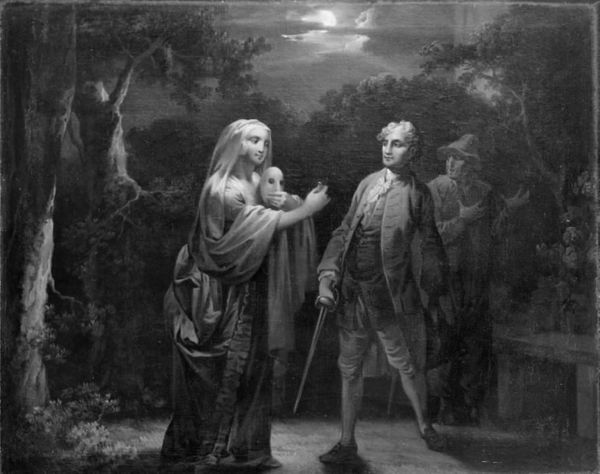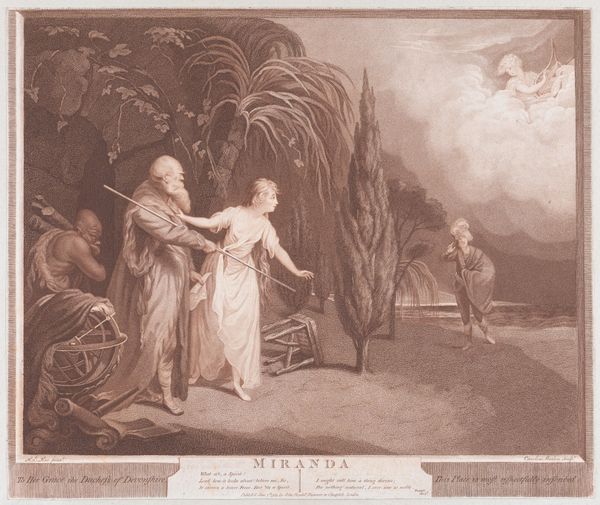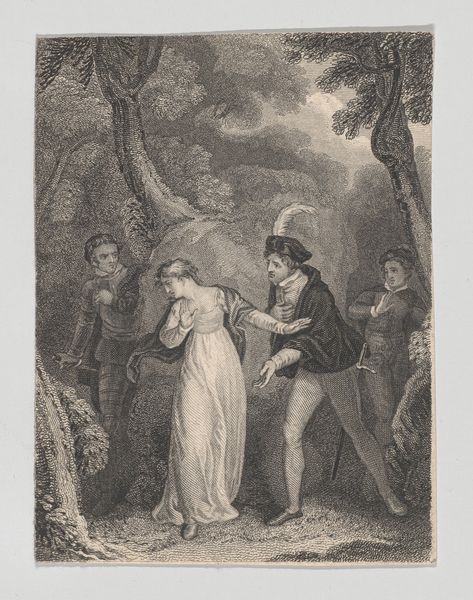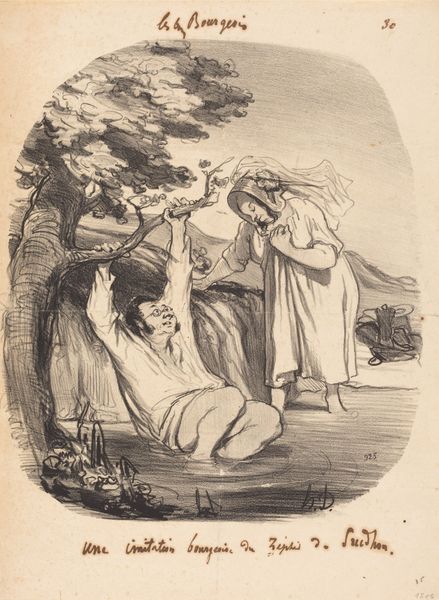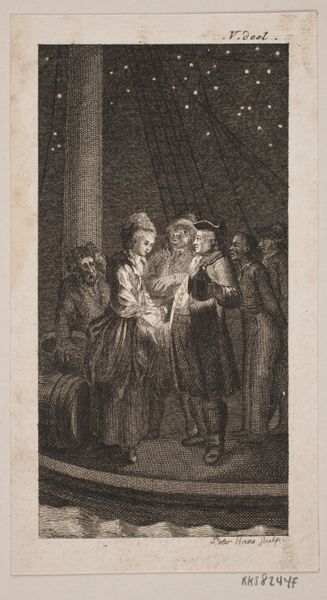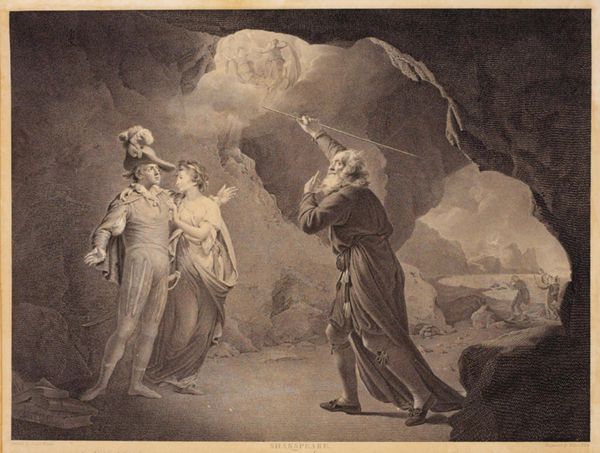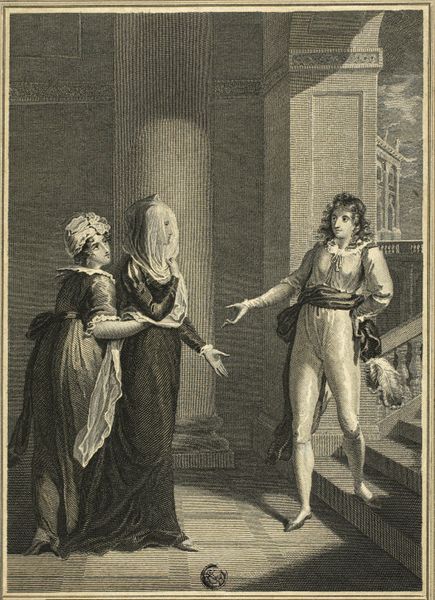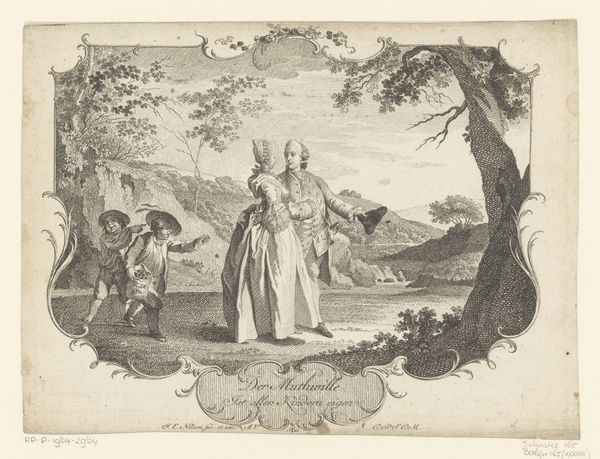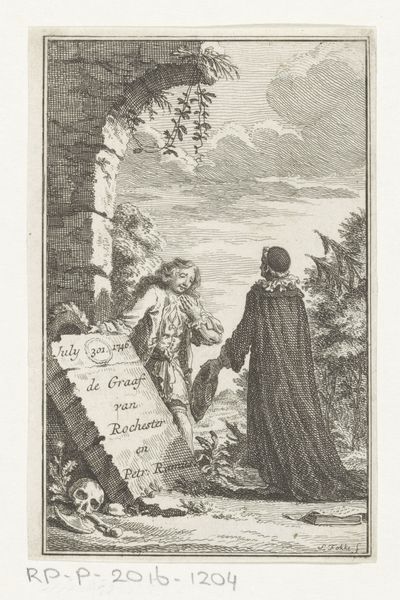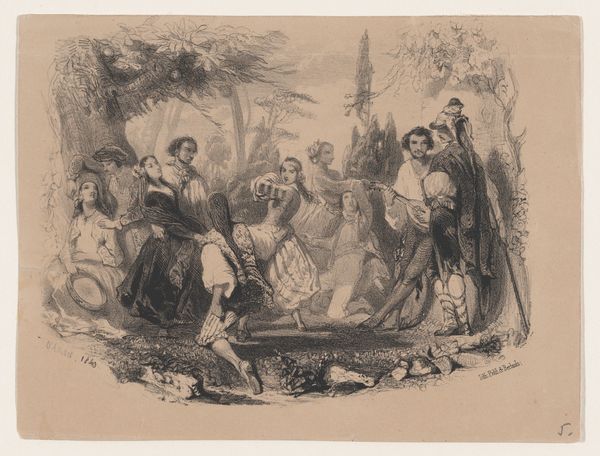
print, etching
#
narrative-art
# print
#
etching
#
landscape
#
figuration
#
old-timey
#
cultural celebration
#
romanticism
#
19th century
#
history-painting
Dimensions: 224 mm (height) x 209 mm (width) (bladmaal)
Curator: This is “De usynlige,” or “The Invisible Ones,” an etching by Johannes Senn, created between 1813 and 1816, currently held here at the SMK. It immediately strikes me as…unsettling. Editor: Indeed. There’s a real sense of theatre here, even melodrama. The figures, the stark moonlight, the shadowed garden—it speaks of hidden agendas. It’s Romanticism playing with the darker side of the Enlightenment’s faith in reason. Curator: Absolutely. Senn worked primarily as a printmaker, often reproducing the works of others. Looking at the process here, the sharp lines and contrast in this etching emphasizes light, which could also imply the shadows of truth and deception. How do you think that choice informs its impact, particularly for its contemporary audience? Editor: The theatrical staging you’ve mentioned must surely come into play here. Senn might have intended that it reminded the viewers of similar staged plays in order to create a narrative. The placement of figures within a domestic yet artificial looking nature evokes similar popular narratives. Furthermore, these types of scenes and aesthetics have become enmeshed with a bourgeoning, privileged public who would come to define high art for a very long time. Curator: That connects to a key element for me –the stark visual of material production: the metal plate, the biting acid, the press… the sheer labor, quite contrary to those who ultimately bought prints like these for display in their parlors. It highlights how art is intertwined with commerce, with specific, complex manufacturing processes that are almost rendered invisible. Editor: Senn and this particular print had to engage with the institutional art structures of the period. To be 'visible' in a public sphere where taste, style, and fashion was rapidly evolving during the transition to modernism is, in and of itself, another narrative present in "The Invisible Ones". What are we to truly believe when 'seeing is believing?' The politics and cultural sway of this time might be all but truly 'invisible' if we weren't actively talking about it, or worse if the SMK, and others, were to store this away somewhere, for no one to experience. Curator: It is really about bringing all of those historical layers together, the hidden labor, the staging, the narrative expectation and consumption of art. The work of art then is both an object and a complex web of social relationships that are revealed as "invisible." Editor: Ultimately, examining this etching offers a powerful way to question how art’s public role constantly shapes not just the work itself, but also our understanding of its history.
Comments
No comments
Be the first to comment and join the conversation on the ultimate creative platform.
